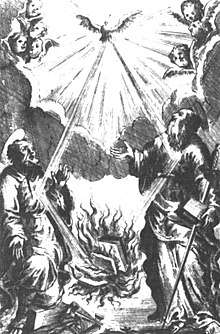Waldensians
The Waldensians (also known as Waldenses (/wɔːlˈdɛnsiːz, wɒl-/), Vallenses, Valdesi or Vaudois) are adherents of a Protestant church tradition that began as an ascetic movement within Western Christianity before the Reformation.
| Waldensians | |
|---|---|
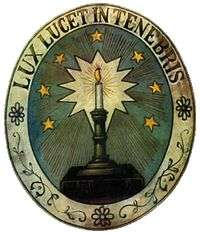 Waldensian symbol Lux lucet in tenebris ("A light shines in the darkness") | |
| Classification | Proto-Protestant |
| Orientation | Reformed |
| Theology | Theology of Peter Waldo and other Waldensian theologians, nowadays also that of John Calvin and other Reformed theologians |
| Region | Italy, France, Germany, Argentina, United States, Uruguay, and elsewhere |
| Founder | Peter Waldo |
| Origin | c. 1173 Lyon, Kingdom of Arles in the Holy Roman Empire (now France) |
| Separated from | Catholic Church |
| Part of a series on the |
| Reformation |
|---|
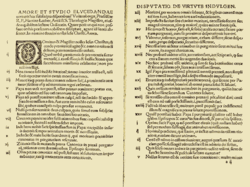 |
|
Contributing factors |
|
Theologies of seminal figures |
|
|
By location |
|
Major political leaders |
|
Counter-Reformation |
|
Art and literature Painting and sculpture
Building Literature Theater |
|
Music Forms
Liturgies
Hymnals
Secular Music |
|
Conclusion and commemorations Conclusion
Monuments Calendrical commemoration |
| Protestantism |
Originally known as the "Poor Men of Lyon"[1] in the late twelfth century,[2][3] the movement spread to the Cottian Alps in what is today France and Italy. The founding of the Waldensians is attributed to Peter Waldo, a wealthy merchant who gave away his property around 1173,[2][3] preaching apostolic poverty as the way to perfection. Waldensian teachings came into conflict with the Catholic Church and by 1215 the Waldensians were declared heretical. Subjected to intense persecution, they were nearly annihilated in the 17th century and were confronted with organised and general discrimination in the centuries that followed. In the 16th century, the Waldensians influenced early Swiss reformer Heinrich Bullinger. Upon finding the ideas of other reformers similar to their own, they merged into the larger Protestant Reformation and, with the Resolutions of Chanforan on 12 September 1532, they formally became a part of the Calvinist tradition.
As early as 1631, Protestant scholars and Waldensian theologians began to regard the Waldensians as early forerunners of the Reformation, who had maintained the apostolic faith in the face of Catholic oppression. Modern Waldensians share core tenets with Calvinists, including the priesthood of all believers, congregational polity and a "low" view of certain sacraments such as Communion and Baptism. They are members of the Community of Protestant Churches in Europe and its affiliates worldwide.
The main denomination within the movement was the Waldensian Evangelical Church, the original church in Italy. In 1975, it merged with the Methodist Evangelical Church to form the Union of Methodist and Waldensian Churches—a majority Waldensian church, with a minority of Methodists.[4][5][6] Another large congregation is the Evangelical Waldensian Church of Río de la Plata in Argentina, Paraguay, and Uruguay.[7][8]
Congregations continue to be active in Europe (particularly in the Piedmont region of Northern Italy), South America, and North America. Organizations such as the American Waldensian Society maintain the history of the movement and declare their mission as "proclaiming the Christian Gospel, serving the marginalized, promoting social justice, fostering inter-religious work, and advocating respect for religious diversity and freedom of conscience."[9]
Historical sources
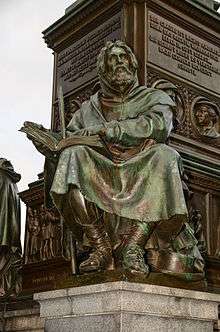
Most modern knowledge of the medieval history of the Waldensians originates almost exclusively from the records and writings of the Roman Catholic Church, the same body that was condemning them as heretics.[10] Because of "the documentary scarcity and unconnectedness from which we must draw the description of Waldensian beliefs,"[11] much of what is known about the early Waldensians comes from reports like the Profession of faith of Valdo of Lyon (1180); Durando d'Osca (c. 1187–1200) Liber antiheresis; and the Rescriptum of Bergamo Conference (1218). Earlier documents that provide information about early Waldensian history include the Will of Stefano d'Anse (1187); the Manifestatio haeresis Albigensium et Lugdunensium (c. 1206–1208); and the Anonymous chronicle of Lyon (c. 1220). There are also the two reports written for the Inquisition by Reinerius Saccho (died 1259), a former Cathar who converted to Catholicism, published together in 1254 as Summa de Catharis et Pauperibus de Lugduno (On the Cathars and the Poor of Lyon).[12]
Teachings
Waldensians held and preached a number of truths as they read from the Bible. These included:
- The atoning death and justifying righteousness of Christ;
- The Godhead;
- The fall of man;
- The incarnation of the Son;
- A denial of purgatory as the "invention of the Antichrist;"[13]
- The value of voluntary poverty.
They also rejected a number of concepts that were widely held in Christian Europe of the era. For example, the Waldensians held that temporal offices and dignities were not meant for preachers of the Gospel; that relics were no different from any other bones and should not be regarded as special or holy; that pilgrimage served only to spend one's money; that flesh might be eaten any day if one's appetite served one; that holy water was no more efficacious than rain water; and that prayer was just as effectual if offered in a church or a barn. They were accused, moreover, of having scoffed at the doctrine of transubstantiation, and of having spoken blasphemously of the Catholic Church as the harlot of the Apocalypse.[14] They rejected what they perceived as the idolatry of the Catholic Church and considered the Papacy as the Antichrist of Rome.[15]
The "La nobla leyczon" ("the noble lesson"), written in the Occitan language, gives a sample of the medieval Waldensian belief. It was believed that this poem dated between 1190 and 1240,[16] but there is evidence that it was written in the first part of the fifteenth century.[17] The poem exists in four manuscripts: two are housed at University of Cambridge, one at Trinity College in Dublin, and another in Geneva.[18]
History
Origins
According to legend, Peter Waldo renounced his wealth as an encumbrance to preaching,[19] which led other members of the Catholic clergy to follow his example. Because of this shunning of wealth, the movement was early known as The Poor of Lyon and The Poor of Lombardy.[20]
The Waldensian movement was characterized from the beginning by lay preaching, voluntary poverty, and strict adherence to the Bible. Between 1175 and 1185, Waldo either commissioned a cleric from Lyon to translate the New Testament into the vernacular—the Arpitan (Franco-Provençal) language [21]—or was himself involved in this translation work.
In 1179, Waldo and one of his disciples went to Rome, where Pope Alexander III and the Roman Curia welcomed them. They had to explain their faith before a panel of three clergymen, including issues that were then debated within the Church, such as the universal priesthood, the gospel in the vulgar tongue, and the issue of voluntary poverty. The results of the meeting were inconclusive, and the Third Lateran Council in the same year condemned Waldo's ideas, but not the movement itself; the leaders of the movement had not yet been excommunicated.[22]
The Waldensians proceeded to disobey the Third Lateran Council and continued to preach according to their own understanding of the Scriptures. By the early 1180s, Waldo and his followers were excommunicated and forced from Lyon. The Catholic Church declared them heretics, stating that the group's principal error was contempt for ecclesiastical power. Rome also accused the Waldensians of teaching innumerable errors.[23]
Waldo and his followers developed a system whereby they would go from town to town and meet secretly with small groups of Waldensians. There they would confess sins and hold service. A traveling Waldensian preacher was known as a barba. The group would shelter the barba and help make arrangements to move on to the next town in secret.[24] Waldo possibly died in the early 13th century, possibly in Germany; he was never captured, and his fate remains uncertain.[25]
Early Waldensians belonged to one of three groups:[26]
- Sandaliati (those with sandals) received sacred orders and were to prove the heresiarchs wrong;
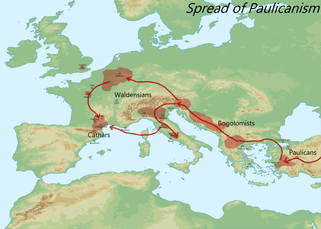 map showing the spread of Paulicianism
map showing the spread of Paulicianism - Doctores instructed and trained missionaries;
- Novellani preached to the general population.
They were also called Insabbatati, Sabati, Inzabbatati, or Sabotiers—designations arising from the unusual type of sabot they used as footwear.[27][28][29]
Catholic response
.jpg)
The Catholic Church viewed the Waldensians as unorthodox, and in 1184 at the Synod of Verona, under the auspices of Pope Lucius III, they were excommunicated. Pope Innocent III went even further during the Fourth Lateran Council in 1215, officially denouncing the Waldensians as heretics.[31][32] In 1211 more than 80 Waldensians were burned as heretics at Strasbourg; this action launched several centuries of persecution that nearly destroyed the movement.[33] Waldensians briefly ruled Buda, the capital of Hungary from 1304 to 1307. The Waldensians in turn excommunicated Pope Benedict XI.[34]
In 1487 Pope Innocent VIII issued a bull[35] for the extermination of the heresies of the Vaudois. Alberto de' Capitanei, archdeacon of Cremona, responded to the bull by organizing a crusade to fulfill its order and launched an offensive in the provinces of Dauphiné and Piedmont. Charles I, Duke of Savoy, eventually interfered to save his territories from further turmoil and promised the Vaudois peace, but not before the offensive had devastated the area and many of the Vaudois had fled to Provence or south to Italy.
The theologian Angelo Carletti di Chivasso, whom Innocent VIII in 1491 appointed Apostolic Nuncio and Commissary conjointly with the Bishop of Mauriana, was involved in reaching a peaceful agreement between Catholics and Waldensians.[36]
Reformation
When the news of the Reformation reached the Waldensian Valleys, the Tavola Valdese decided to seek fellowship with the nascent Protestantism. At a meeting held in 1526 in Laus, a town in the Chisone valley, it was decided to send envoys to examine the new movement. In 1532, they met with German and Swiss Protestants and ultimately adapted their beliefs to those of the Reformed Church.
The Swiss and French Reformed churches sent William Farel and Anthony Saunier to attend the meeting of Chanforan, which convened on 12 October 1532. Farel invited them to join the Reformation and to emerge from secrecy. A Confession of Faith, with Reformed doctrines, was formulated and the Waldensians decided to worship openly in French.
The French Bible, translated by Pierre Robert Olivétan with the help of Calvin and published at Neuchâtel in 1535, was based in part on a New Testament in the Waldensian vernacular. The churches in Waldensia collected 1500 gold crowns to cover the cost of its publication.[37]
Massacre of Mérindol (1545)
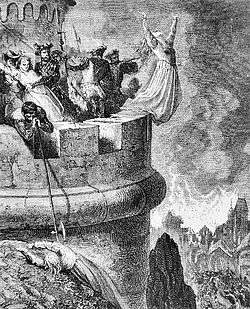
Outside the Piedmont, the Waldenses joined the local Protestant churches in Bohemia, France, and Germany. After they came out of seclusion and reports were made of sedition on their part, French King Francis I on 1 January 1545 issued the "Arrêt de Mérindol", and assembled an army against the Waldensians of Provence. The leaders in the 1545 massacres were Jean Maynier d'Oppède, First President of the parliament of Provence, and the military commander Antoine Escalin des Aimars, who was returning from the Italian Wars with 2,000 veterans, the Bandes de Piémont. Deaths in the Massacre of Mérindol ranged from hundreds to thousands, depending on the estimates, and several villages were devastated.[38]
The treaty of 5 June 1561 granted amnesty to the Protestants of the Valleys, including liberty of conscience and freedom to worship. Prisoners were released and fugitives permitted to return home, but despite this treaty, the Vaudois, with the other French Protestants, still suffered during the French Wars of Religion in 1562–1598.
As early as 1631, Protestant scholars began to regard the Waldensians as early forerunners of the Reformation, in a manner similar to the way the followers of John Wycliffe and Jan Hus, also persecuted by authorities, were viewed.
Although the Waldensian church was granted some rights and freedoms under French King Henry IV, with the Edict of Nantes in 1598, persecution rose again in the 17th century, with an extermination of the Waldensians attempted by the Duke of Savoy in 1655. This led to the exodus and dispersion of the Waldensians to other parts of Europe and even to the Western hemisphere.
Piedmont Easter
In January 1655, the Duke of Savoy commanded the Waldensians to attend Mass or remove to the upper valleys of their homeland, giving them twenty days in which to sell their lands. Being in the midst of winter, the order was intended to persuade the Vaudois to choose the former; however, the bulk of the populace instead chose the latter, abandoning their homes and lands in the lower valleys and removing to the upper valleys. It was written that these targets of persecution, including old men, women, little children and the sick "waded through the icy waters, climbed the frozen peaks, and at length reached the homes of their impoverished brethren of the upper Valleys, where they were warmly received."[39]
By mid-April, when it became clear that the Duke's efforts to force the Vaudois to conform to Catholicism had failed, he tried another approach. Under the guise of false reports of Vaudois uprisings, the Duke sent troops into the upper valleys to quell the local populace. He required that the local populace quarter the troops in their homes, which the local populace complied with. But the quartering order was a ruse to allow the troops easy access to the populace. On 24 April 1655, at 4 a.m., the signal was given for a general massacre.
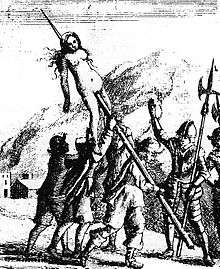
The Duke's forces did not simply slaughter the inhabitants. They are reported to have unleashed an unprovoked campaign of looting, rape, torture, and murder. According to one report by a Peter Liegé:
Little children were torn from the arms of their mothers, clasped by their tiny feet, and their heads dashed against the rocks; or were held between two soldiers and their quivering limbs torn up by main force. Their mangled bodies were then thrown on the highways or fields, to be devoured by beasts. The sick and the aged were burned alive in their dwellings. Some had their hands and arms and legs lopped off, and fire applied to the severed parts to staunch the bleeding and prolong their suffering. Some were flayed alive, some were roasted alive, some disemboweled; or tied to trees in their own orchards, and their hearts cut out. Some were horribly mutilated, and of others the brains were boiled and eaten by these cannibals. Some were fastened down into the furrows of their own fields, and ploughed into the soil as men plough manure into it. Others were buried alive. Fathers were marched to death with the heads of their sons suspended round their necks. Parents were compelled to look on while their children were first outraged [raped], then massacred, before being themselves permitted to die.[40]
This massacre became known as the Piedmont Easter. An estimate of some 1,700 Waldensians were slaughtered; the massacre was so brutal it aroused indignation throughout Europe. Protestant rulers in northern Europe offered sanctuary to the remaining Waldensians. Oliver Cromwell, then ruler in England, began petitioning on behalf of the Waldensians; writing letters, raising contributions, calling a general fast in England and threatening to send military forces to the rescue. The massacre prompted John Milton's poem on the Waldenses, "On the Late Massacre in Piedmont".[41] Swiss and Dutch Calvinists set up an "underground railroad" to bring many of the survivors north to Switzerland and even as far as the Dutch Republic, where the councillors of the city of Amsterdam chartered three ships to take some 167 Waldensians to their City Colony in the New World (Delaware) on Christmas Day 1656.[42] Those that stayed behind in France and the Piedmont formed a guerilla resistance movement led by a farmer, Joshua Janavel, which lasted into the 1660s.[43]
Revocation of the Edict of Nantes and the "Glorious Return"
In 1685 Louis XIV revoked the 1598 Edict of Nantes, which had guaranteed freedom of religion to his Protestant subjects in France. French troops sent into the French Waldensian areas of the Chisone and Susa Valleys in the Dauphiné forced 8,000 Vaudois to convert to Catholicism and another 3,000 to leave for Germany.
In the Piedmont, the cousin of Louis, the newly ascended Duke of Savoy, Victor Amadeus II, followed his uncle in removing the protection of Protestants in the Piedmont. In the renewed persecution, and in an echo of the Piedmont Easter Massacre of only three decades earlier, the Duke issued an edict on 31 January 1686 that decreed the destruction of all the Vaudois churches and that all inhabitants of the Valleys should publicly announce their error in religion within fifteen days under penalty of death and banishment. But the Vaudois remained resistant. After the fifteen days, an army of 9,000 French and Piedmontese soldiers invaded the Valleys against the estimated 2,500 Vaudois, but found that every village had organized a defense force that kept the French and Piedmontese soldiers at bay.
On 9 April, the Duke of Savoy issued a new edict, enjoining the Waldensians to put down their arms within eight days and go into exile between 21 and 23 April. If able, they were free to sell their land and possessions to the highest bidder.
Waldensian pastor Henri Arnaud (1641–1721), who had been driven out of the Piedmont in the earlier purges, returned from Holland. On 18 April he made a stirring appeal before an assembly at Roccapiatta, winning over the majority in favor of armed resistance. When the truce expired on 20 April, the Waldensians were prepared for battle.
They put up a brave fight over the next six weeks, but by the time the Duke retired to Turin on 8 June, the war seemed decided: 2,000 Waldensians had been killed; another 2,000 had "accepted" the Catholic theology of the Council of Trent. Another 8,000 had been imprisoned, of which more than half would die of deliberately imposed starvation, or of sickness within six months.
But about two or three hundred Vaudois fled to the hills and began carrying out a guerilla war over the next year against the Catholic settlers who arrived to take over the Vaudois lands. These "Invincibles" continued their assaults until the Duke finally relented and agreed to negotiate. The "Invincibles" won the right for the imprisoned Vaudois to be released from prison and to be provided safe passage to Geneva. But the Duke, granting that permission on 3 January 1687, required that the Vaudois leave immediately or convert to Catholicism. This edict led to some 2,800 Vaudois leaving the Piedmont for Geneva, of whom only 2,490 would survive the journey.
Arnaud and others now sought help of the allied European powers. He appealed to William of Orange directly from Geneva, while others, amongst whom was the young L'Hermitage, were sent to England and other lands to canvas for support. Orange and the allies were glad of any excuse to antagonise France, whose territorial encroachments on all fronts were intolerable. The League of Augsburg was formed in 1686 under Orange, who promised support to Arnaud. In August 1689, in the midst of the wars between the League of Augsburg and France, Arnaud led 1,000 Swiss exiles, armed with modern weaponry provided by the Dutch, back to the Piedmont. Over a third of the force perished during the 130-mile trek. They successfully re-established their presence in the Piedmont and drove out the Catholic settlers, but they continued to be besieged by French and Piedmontese troops.
By 2 May 1689, with only 300 Waldensian troops remaining, and cornered on a high peak called the Balsiglia, by 4,000 French troops with cannons, the final assault was delayed by storm and then by cloud cover. The French commander was so confident of completing his job the next morning that he sent a message to Paris that the Waldensian force had already been destroyed. However, when the French awoke the next morning they discovered that the Waldensians, guided by one of their number familiar with the Balsiglia, had already descended from the peak during the night and were now miles away.
The French pursued, but only a few days later a sudden change of political alliance by the Duke, from France to the League of Augsburg, ended the French pursuit of the Waldensians. The Duke agreed to defend the Waldensians and called for all other Vaudois exiles to return home to help protect the Piedmont borders against the French, in what came to be known as the "Glorious Return".[44]
Religious freedom after the French Revolution
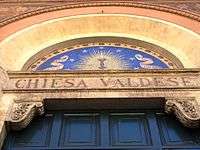
After the French Revolution, the Waldenses of Piedmont were assured liberty of conscience and, in 1848, the ruler of Savoy, King Charles Albert of Sardinia granted them civil rights.
Enjoying religious freedom, the Waldensians began migrating outside their valleys. By the time of Italian unification, the Waldensian had congregations throughout the peninsula, some originated by preaching, others by migration.[45] However, poverty, societal discrimination, and demographic pressure led the Waldensians to emigrate, first as seasonal workers to the French Riviera and Switzerland, and later to Colonia Valdense in Uruguay, Jacinto Arauz in La Pampa, Argentina and ultimately, to the United States.[46] Those who remained in Italy have experienced upward social mobility. Waldensian companies dominated Turin's chocolate industry for the latter half of the nineteenth century and are generally credited with the invention of gianduja (hazelnut chocolate).[47]
Waldensian scholarship also flourished in the nineteenth century. Copies of the Romaunt version of the Gospel of John were preserved in Paris and Dublin. The manuscripts were used as the basis of a work by William Stephen Gilly published in 1848, in which he described the history of the New Testament in use by the Waldensians.[48] The Waldensian College began training ministers in 1855, first in Torre Pellice. A few years later, the Waldensian College relocated to Florence and, in 1922, to Rome. Economic and social integration have eased acceptance of ethnic Waldensians into Italian society. Writers like Italo Calvino and politicians like Domenico Maselli and Valdo Spini are of Waldensian background. The church has also attracted intellectuals as new adherents and supporters and enjoys significant financial support from non-adherent Italians.
Apology of Pope Francis
In 2015, after a historic visit to a Waldensian Temple in Turin, Pope Francis, in the name of the Catholic Church, asked Waldensian Christians for forgiveness for their persecution. The Pope apologized for the Church's "un-Christian and even inhumane positions and actions".[49]
Characteristics of the modern Waldensian Church
The present Waldensian Church considers itself to be a Protestant church of the Reformed tradition originally framed by Huldrych Zwingli and John Calvin.[22] It recognizes as its doctrinal standard the confession of faith published in 1655 and based on the Reformed confession of 1559. It admits only two ceremonies, baptism and the Lord's Supper.[22] Supreme authority in the body is exercised by an annual synod, and the affairs of the individual congregations are administered by a consistory under the presidency of the pastor.[22]
Over the centuries, Waldensian churches have been established in countries as far away from France as Uruguay and the United States where the active Waldensian congregations continue the purpose of the Waldensian movement. The contemporary and historic Waldensian spiritual heritage describes itself as proclaiming the Gospel, serving the marginalized, promoting social justice, fostering inter-religious work, and advocating respect for religious diversity and freedom of conscience.[9] Today, the Waldensian Church is member of the World Communion of Reformed Churches, the World Methodist Council, the Federation of Evangelical Churches in Italy, and the World Council of Churches.
Appraisal by Protestants
| Part of a series on |
| Protestantism |
|---|
 |
|
Major branches |
|
Minor branches |
|
Broad-based movements |
|
Related movements |
|
|
Some early Protestants felt a spiritual kinship to the Waldensians and wrote positively about them. John Milton, for example, wrote in his sonnet "On the Late Massacre in Piedmont" of the 1655 massacre and persecution of the Waldensians.
It was once held that the Waldenses were first taught by Paul the Apostle who visited Spain and then allegedly traveled on to the Piedmont. As the Catholic Church indulged in excesses in the time of Constantine (Roman Emperor from 306 to 337) - the account tells - the Waldenses held true to their apostolic faith of poverty and piety. These claims were discounted in the nineteenth century.[50]
There were also other claims that the Waldensians predated Peter Waldo's activities in the late 12th century. In his A History of the Vaudois Church (1859),[51] Antoine Monastier quotes Bernard, abbot of Foncald, who wrote at the end of the 12th century that the Waldensians arose during the papacy of Lucius.[52] Monastier takes Bernard to mean Lucius II, in office from 1144 to 1145, and concludes that the Waldenses were active before 1145. Bernard also says that the same Pope Lucius condemned them as heretics, but they were condemned by Pope Lucius III in 1184.[53]
Monastier also says that Eberard de Béthune, writing in 1210 (although Monastier says 1160), claimed that the name Vaudois meant "valley dwellers" or those who "dwell in a vale of sorrow and tears", and was in use before the times of Peter Waldo.
Waldensians feature in the theories of Baptist successionism and Landmarkism concerning an alleged continuous tradition of practices and beliefs from John the Baptist onwards.[54]
Some historical writers suggest Waldensian beliefs came from missionaries from the early church and that their history may have its origins in the apostolic age,[55] though this idea itself stems from Baptist Successionism, an idea that was very popular among some 19th century Church historians but has been largely rejected by modern scholars in the field. The Roman Inquisitor Reinerus Sacho, writing c. 1230, held the sect of the Vaudois to be of great antiquity, thus preceding Waldo by centuries. According to some early baptist sources there are also accounts of Paulicians, Petrobusians, and Pasaginians, along with the Waldenses of the Alps, who kept Saturday as the Lord's day,.[56] Some Anabaptist and Baptist authors have pointed to the Waldensians as an example of earlier Christians who were not a part of the Catholic Church, and who held beliefs they interpreted to be similar to their own. In the 17th to the 19th centuries, Dutch and German Mennonite writers like van Braght, Martyrs Mirror (1660)[57] and Steven Blaupot ten Cate, Geschiedkundig onderzoek (1844),[58][59] linked Anabaptist origins to the Waldensians. Baptist authors like John L. Waller also linked their origins to the Waldensians.[60][61][62][63][64][65][66] James Aitken Wylie (1808–1890) likewise believed the Waldensians preserved the apostolic faith and its practices during the Middle Ages.[67]
Still later, Seventh-day Adventist Ellen G. White taught that the Waldenses were preservers of biblical truth during the Great Apostasy of the Catholic Church.[68] She claimed the Waldenses kept the seventh-day Sabbath,[69] engaged in widespread missionary activity, and "planted the seeds of the Reformation" in Europe.[70][71]
Scholar Michael W. Homer links the belief in an ancient origin of the Waldensians to three 17th century pastors, Jean-Paul Perrin of the Reformed Church of France and the Waldensian pastors Pierre Gilles and Jean Léger, who posited that the Waldensians were descendants of Primitive Christianity.[72]
Some authors[73][74] try to date a Reformation-era Waldensian confession of faith back into the Middle Ages in 1120 to assert their claim of doctrinal antiquity.[75] However, in the current historiography from the Waldensians themselves it is asserted that this confession was drafted in 1531.[76][77]
Protestant theology in Germany was interested in the doctrinal antiquity and apostolic continuity being expressed by the Waldensian faith. The high independence of the communities, lay preaching, voluntary poverty, and strict adherence to the Bible and its early translation through Peter Waldo have been credited to prove an ancient origin of Protestantism as the true interpretation of the faith. Mere anti-Catholic sentiments and controversies, for example in the Kulturkampf, played a role. Heinrich Gottlieb Kreussler (1830) History of the Reformation contains a ballade about the fate of the Waldensians and quotes fr:Jean Léger's History of the Waldenians (1750) (authored with Siegmund Jakob Baumgarten, published by Johann Jacob Korn) as proof of an early origin of the Waldensians.[78][79][80] The strong German Protestant support for the Waldensian diaspora community in Italy—leading staff of the Gustavus Adolphus Union (GAW) praised them as one of the most interesting churches of all[81]—was not confined to a theological fascination. It led to extensive financial support, loans, exchange of priesters and communities, aid missions and political interventions for the Italian Waldensians and their charitable efforts, starting from the 17th century.[81][82] After World War II, the Evangelical Church in Germany actively contributed to reconciliation efforts with Italy and France based on its relationship with the Waldensian community.[81] The GAW has ongoing links with the Waldensians in Italy.
Waldensians by region
Italy
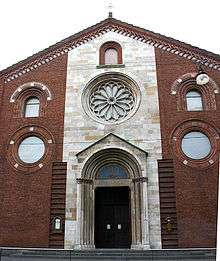
In 1848, after many centuries of harsh persecution, the Waldensians acquired legal freedom in the Kingdom of Piedmont-Sardinia as a result of the liberalising reforms which followed Charles Albert of Sardinia's granting a constitution (the Statuto Albertino). Subsequently, the Waldensian Evangelical Church, as it became known, developed and spread through the Italian peninsula.
The Waldensian church was able to gain converts by building schools in some of the poorer regions of Italy, including Sicily. There is still a Waldensian church in the town of Grotte, at the southwest of the island.[83] German Protestants have been supportive of the Waldesians in Italy since the 17th century.
During the Nazi occupation of North Italy in the Second World War, Italian Waldensians were active in saving Jews faced with imminent extermination, hiding many of them in the same mountain valley where their own Waldensian ancestors had found refuge in earlier generations.[84][85]
After 1945, the Evangelical Church in Germany led by Theophil Wurm (who was also Bishop of Württemberg) issued the Stuttgart Declaration of Guilt and actively contributed to reconciliation efforts with Italy (and France) based on relationships with the diaspora. The 1948 centenary festivities of the Savoy civil rights declaration were used for efforts of EKD leading staff to support German Italian reconciliation after WW-II.[81] A most fruitful cooperation was established at the community level, with Waldensian delegates from both sides pioneering.[81] 1949, Guglielmo Del Pesco (1889–1951), moderator of the Tavola Valdese (Waldensian round table), was invited back to Maulbronn, celebrating the 250th anniversary of the Waldensian emigration to Germany.[81] He was unable to come for reasons of health but sent A. Jalla, a teacher, described as being full of spite and hatred against all things German after 1945, but who joined in the effort for reconciliation 1949.[81] Based on these experiences, the first town-twinning partnership between Germany and France was signed 1950 between Ludwigsburg and the Protestant exclave Montbéliard, again based on a special connection of the Württemberg Landeskirche. The German Gustavus Adolphus Union is supportive of Waldesian projects and charitable efforts in Italy till the present.[86]
In 1975, the Waldensian Church joined the Methodist Evangelical Church in Italy to form the Union of Waldensian and Methodist Churches. It has 50,000 members (45,000 Waldensians, of whom 30,000 in Italy and some 15,000 divided between Argentina and Uruguay, and 5,000 Methodists).
The Eight per thousand tax introduced 1985 in Italy greatly helped the Waldensian community. The Eight per thousand (Italian: otto per mille) law allows taxpayers to choose to whom they devolve a compulsory 8 ‰ = 0.8% ('eight per thousand') from their annual income tax return. They may choose an organised religion recognised by Italy or a social assistance scheme run by the Italian State. While the Waldensians have only about 25,000 enlisted members, more than 600,000 Italians are willing to support the Waldensian community and its charitable works.[87] The ordination of women and, since 2010, the blessing of same-sex unions[88][89] are allowed.
South America
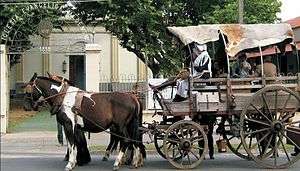
The first Waldensian settlers from Italy arrived in South America in 1856. From that date there have been several migrations, especially to Argentina, such as the town of Jacinto Aráuz in the southern part of the province of La Pampa, where they arrived around 1901. As of 2016 the Waldensian Church of the Río de La Plata (which forms a united church with the Waldensian Evangelical Church) has approximately 40 congregations and 15,000 members shared between Uruguay and Argentina.[90]
The Uruguayan town Colonia Valdense, in the department of Colonia, is the administrative center of the Waldensian Evangelical Church of the River Plate. In 1969, the Church established a mission in Barrio Nuevo, which became a soup kitchen for Saturdays and Sundays, for 500 poor families. Missionary activity has led to the conversion of new people without Waldensian ancestry, who are called "new Waldensian".[91]
From Uruguay or directly from Italy, some Waldensian families also found home in Brazil. There, they ended up joining the local Protestant churches.[92]
United States
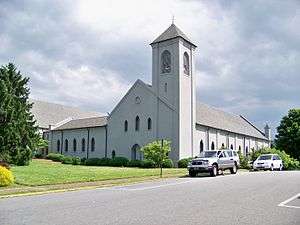
Since colonial times there have been Waldensians who sailed to America, as marked by the presence of them in New Jersey and Delaware. Many Waldensians, having escaped persecution in their homelands by making their way to the tolerant Dutch Republic, crossed the Atlantic to start anew in the New Netherland colony, establishing the first church in North America on Staten Island in 1670.[93]
In the late 19th century many Italians, among them Waldensians, emigrated to the United States. They founded communities in New York City; Boston; Chicago; Monett, Missouri; Galveston, Texas; Rochester, New York; Hunter, Utah; and Ogden, Utah.[94] The Monett congregation was among the first to be established in the United States, in 1875, by some 40 settlers who had formed the original South American settlement in Uruguay in the 1850s. With the outbreak of the Uruguayan Civil War they had fled violence in the Uruguayan countryside, traveling first back to Europe then across the Northern Atlantic to New York and by train to southern Missouri. Waldensians living in the Cottian Alps region of Northern Italy continued to migrate to Monett until the early 1900s, augmenting the original colony, and founded another, larger settlement in Valdese, North Carolina, in 1893. The first Waldenses settled in North Carolina in 1893.[95] Both the Monett and Valdese congregations use the name Waldensian Presbyterian Church.
In 1853 a group of approximately 70 Waldensians, including men, women, and children left their homes in the Piedmont Valleys and migrated to Pleasant Green, Hunter, and Ogden, Utah, after being converted to Mormonism by Lorenzo Snow. These Waldensians maintained their cultural heritage, while passing on their mixture of Mormon and Waldensian faiths to their descendants. Their descendants still consider themselves both Mormon and Waldensian, and have met occasionally over the many decades to celebrate both heritages.[96][97][98][99]
In 1906, through the initiative of church forces in New York City, Waldensian interest groups were invited to coalesce into a new entity, The American Waldensian Aid Society (AWS), organized "to collect funds and apply the same to the aid of the Waldensian Church in Italy and elsewhere ... and to arouse and maintain interest throughout the US in the work of said Church." Today, this organization continues as the American Waldensian Society. The American Waldensian Society recently marked its Centennial with a conference and celebrations in New York City.
By the 1920s most of the Waldensian churches and missions merged into the Presbyterian Church due to the cultural assimilation of the second and third generations.
The work of the American Waldensian Society continues in the United States today. The American Waldensian Society aims to foster dialogue and partnership among Waldensian Churches in Italy and South America and Christian churches within North America in order to promote a compelling vision of Waldensian Christian witness for North America. Thus, the American Waldensian Society makes public the contemporary and historic heritage to which Waldensian spirituality is committed: Tell the Story; Encourage "Crossings"; and Provide Financial Support.[100]
The best known Waldensian Churches in America were in New York, Monett, Missouri and in Valdese, North Carolina. The church in New York City was disbanded by the mid-1990s.[101]
The American Waldensian Society assists churches, organizations and families in the promotion of Waldensian history and culture. The society allies with those who work to preserve their millennial heritage among their descendants. For example, over the course of 45 years, the Old Colony Players in Valdese, North Carolina, have staged From this Day Forward, an outdoor drama telling the story of the Waldenses and the founding of Valdese.[95]
The Waldensian Presbyterian churches in the United States and the American Waldensian Society have links with the Italian-based Waldensian Evangelical Church, but, unlike the South American Waldensian communities, today they are independent institutions from the European organization.
Germany
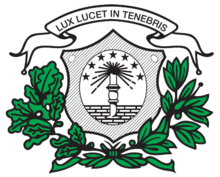
Several thousand Waldenses fled from Italy and France to Germany. Henri Arnaud (1641–1721), pastor and leader of the Piedmont Waldensians, rescued his co-religionists from their dispersion under the persecution of Victor Amadeus II the Duke of Savoy. Eberhard Louis, Duke of Württemberg invited the Waldensians to his territory. When the Waldensians were exiled a second time, Arnaud accompanied them in their exile to Schönenberg, and continued to act as their pastor until his death. Those who remained in Germany were soon assimilated by the State Churches (Lutheran and Reformed) and they are a part of various Landeskirchen in the Evangelical Church in Germany. The new settlers were free in their religious services, and kept holding them in French till the 19th century. The Waldensian community is often overlooked, as the Hugenots were larger in count. Henri Arnaud's home in Schönenberg close to Ötisheim is a Museum today. A memorial plate refers to the introduction of potatoes in Württemberg by the Waldensians.
Main parts of the Waldensian refugees found a new home in Hessen-Darmstadt, Kassel, Homburg, Nassau-Dillenburg and in the then Grand Duchée Württemberg. The founded new communities in Rohrbach, Wembach und Hahn (today part of Ober-Ramstadt), Walldorf (today Mörfelden-Walldorf), Bad Homburg-Dornholzhausen, Gottstreu and Gewissenruh (Oberweser), Charlottenberg. Still today, French family names (Gille, Roux, Granget, Conle, Gillardon, Common, Jourdan, Piston, Richardon, Servay, Conte, Baral, Gay, Orcellet or Salen) show the Savoyard background. Stuttgart hosts as well an Italian Waldensian community with about 100 members.
Municipality names like Pinache, Serres (both now part of Wiernsheim), Großvillars, Kleinvillars (part of Oberderdingen), Perouse show the French heritage, the latter communities are close to Maulbronn and its UNESCO world heritage site monastery and school. Maulbronn was the place of the festivities for the 250th anniversary of the Waldensian emigration to Germany,[81] which played as well an important role in German Italian reconciliation after World War II.[81]
The Waldensian community is active and has various associations maintaining the specific heritage and keep relationships with their counterparts in Italy and South America.[102][103][104][105] That includes as well a close watch on the ecumene, with the Waldensian-influenced theologians being more doubtful about a stronger cooperation with the Catholic Church than others.
See also
- Arnoldists
- Czech reformers Petr Chelčický, Jan Hus, Jerome of Prague and Hussitism
- Durand of Huesca, early Spanish follower of Peter Waldo (later re-converted to Catholicism)
- Frederick Henry Snow Pendleton, Anglican protector who worked with the Waldensians in South America
- Henri Arnaud, a Waldensian writer, pastor, and soldier
- List of Italian religious minority politicians
- Lollards
- Proto-Protestantism
- Restorationism
References
- https://www.museeprotestant.org/en/notice/a-history-of-the-waldensians/
- "Waldenses". Encyclopaedia Britannica. Retrieved 28 January 2019.
little is known with certainty about the reputed founder, Valdes (also called Peter Waldo, or Valdo). As a layman, Valdes preached (1170–76) in Lyon, France
- Weber, N. (1912). "Waldenses". Catholic Encyclopedia. New Advent. Retrieved 28 January 2019.
The real founder of the sect was a wealthy merchant of Lyons who in the early documents is called Waldes (Waldo)…On the feast of the Assumption, 1176, he disposed of the last of his earthly possessions and shortly after took the vow of poverty.
- moreorless - www.moreorless.net. "Le religioni in Italia: Il movimento valdese". cesnur.org. Retrieved 23 March 2014.
- Consulenza sull'interfaccia e la realizzazione del codice. "Chiesa Evangelica Valdese – Unione delle chiese Metodiste e Valdesi". chiesavaldese.org. Retrieved 23 March 2014.
- "Per un patto tra la Chiesa Assemblee di Dio e la Chiesa valdese" (PDF). 20 September 2009. Retrieved 23 March 2014.
- "Quienes somos – IEVRP" (in Spanish). Retrieved 9 April 2019.
- "South America". www.waldensian.org. Retrieved 9 April 2019.
- "American Waldensian Society". Waldensian.org. Retrieved 26 February 2014.
- p. 66. Pita, Gonzalo. 2014. Waldensian and Catholic Theologies of History in the XII–XIV Centuries: Part I. Journal of the Adventist Theological Society 25.2: 65–87.
- p. 87. Pita, Gonzalo. 2014. Waldensian and Catholic Theologies of History in the XII–XIV Centuries: Part I. Journal of the Adventist Theological Society 25.2: 65–87.
- "Medieval Sourcebook: Accusations against the Waldensians". Fordham.edu. Retrieved 26 February 2014.
- Samuel Moreland (1658) History of the Evangelical Churches of the Valleys of Piedmont
- Inquisitor Reyenerious, AD 1250, and extracted by Allix (Chap. 22)
- Lawrence, Eugene (1876). Historical Studies. pp. 202–204.
- Bosio, Enrico: La Nobla Leyczon considérée au point de vue de la doctrine, de la morale et de l'histoire, Bulletin de la Société d'Histoire Vaudoise, n° 2 (dic. 1885), pp. 20–36.
- Montet, Edouard, La noble leçon, texte original d'après le manuscrit de Cambridge, 1888, pp. 19–26.
- Montet, Edouard, La noble leçon, texte original d'après le manuscrit de Cambridge, 1888, p. 19.
- Liber visionum et miraculorum, Anonymous Chronicles of Lyon
- TOURN Giorgio, Les Vaudois, l’étonnante aventure d’un peuple-église, Claudiana, 1999.
- HARRIS, M. Roy. Old Waldensian: Some linguistic and editorial observations. Romance Philology, v. 38, n. 2, p. 200-225, 1984.
- "Catholic Encyclopedia: 'Waldenses'". Newadvent.org. 1 October 1912. Retrieved 26 February 2014.
- Rosalind B. Brooke (1975) The Coming of the Friars, pp. 72–73 (NY: Barnes and Noble)
- Comba, Emilio (1978) History of the Waldenses of Italy, from their origin to the Reformation, AMS Press, New York ISBN 978-0-4041-6119-4
- Biller, Peter (August 2006). "Goodbye to Waldensianism?". Past & Present. 192: 3–33. doi:10.1093/pastj/gtl004. ISSN 0031-2746. JSTOR 4125197. Retrieved 24 March 2014.
- Herbermann, Charles George (1913) The Catholic Encyclopedia, p. 250. Universal Knowledge Foundation
- Herzog, Johann Jakob; Schaff, Philip (1910) The new Schaff-Herzog encyclopedia of religious knowledge, Funk and Wagnalls
- Spini, G (1994) I Valdesi e la non-osservanza del Sabato, Lecture delivered at Waldensian College, Rome
- Goldastus (German Calvinist historian AD 1576–1635)
- "Piedmontese Children Forced from their parents". The Wesleyan Juvenile Offering: A Miscellany of Missionary Information for Young Persons. Wesleyan Missionary Society. X: 108. October 1853. Retrieved 29 February 2016.
- Audisio, Gabriel (1999). The Waldensian Dissent: Persecution and Survival c. 1170–c. 1570. Cambridge: Cambridge University Press. pp. 14, 16, 22. ISBN 978-0-521-55984-3.
-
Compare:
Blainey, Geoffrey (2011). A Short History of Christianity. Camberwell, Victoria: Penguin. p. 430. ISBN 9780857962553. Retrieved 17 February 2018.
The Waldensians eschewed the Cathars, who were busy in the same regions at the same time. While the Cathars were heretics, the Waldensians generally were not. Their real act of defiance was quietly to deny the existence of purgatory.
- Ellwood, R.S.; Alles, G.D. (2007). "Waldensians". The Encyclopedia of World Religions. New York, NY: Facts on File. p. 471. ISBN 978-1-4381-1038-7.
- Galambosi, Péter (2018). "A budai eretnekmozgalom (1304–1307) [The Heretical Movement in Buda (1304–1307)]". In Kádas, István; Skorka, Renáta; Weisz, Boglárka (eds.). Veretek, utak, katonák. Gazdaságtörténeti tanulmányok a magyar középkorról (in Hungarian). MTA Bölcsészettudományi Kutatóközpont. pp. 223–245. ISBN 978-963-416-124-0.CS1 maint: ref=harv (link)
- Innocent VIII (1669). Id nostri cordis. Histoire générale des Eglises Evangeliques des Vallées du Piemont ou Vaudoises. 2. p. 8.
- "CATHOLIC ENCYCLOPEDIA: Bl. Angelo Carletti di Chivasso". Retrieved 30 April 2016.
- Wylie, p. 62
- Knecht, R. J. (1984). Francis I. Cambridge University Press. p. 405. ISBN 978-0-5212-4344-5.
- James Dabney McCabe (1874). Cross and crown: or, The sufferings and triumphs of the heroic men and women who were persecuted for the religion of Jesus Christ. National Pub. Co. p. 66. Retrieved 16 November 2018.
- Wylie, J. A. (1996) [1860]. History of the Waldenses. Hartland. p. 132. ISBN 9780923309305.
- "Milton: Sonnet 18". Dartmouth.edu. Retrieved 26 February 2014.
- Scharf, Thomas J. (1888) History of Delaware, 1609–1888, L. J. Richards & Co., Philadelphia Vol. 1 Vol. 2
- "Janavel". Regard.eu.org. Retrieved 26 February 2014.
- Stephens, Prescot (1998) The Waldensian Story: A Study in Faith, Intolerance and Survival, Book Guild, Lewes, Sussex ISBN 978-1-8577-6280-8
- Giorgio Spini (1971) L'Evangelo e il berretto frigio (Storia del movimento evangelico in Italia, Vol. I), Claudiana, Turin
- Watt, George B. (1941) Waldenses in the New World, Duke University Press, Durham, NC
- Bächstädt-Malan Camusso, Christian (2002) "Per Una Storia dell'Industria Dolciaria Torinese: il Caso Caffarel", p. 63, Doctoral thesis (Economics and Business), Universitá degli Studi di Torino
- Gilly, William S. (1848) The Romaunt Version of the Gospel according to St. John, John Murray, London
- "Pope Francis asks Waldensian Christians to forgive the Church". Catholic Herald. 22 June 2015. Retrieved 22 June 2015.
-
Weber, N. (1912). "Waldenses". Catholic Encyclopedia. New Advent. Retrieved 28 January 2019.
The first Waldensian congregations, it was maintained, were established by St. Paul who, on his journey to Spain, visited the valleys of Piedmont… In the nineteenth century, however, it became evident to critics that the Waldensian documents had been tampered with.
- See also: Monastier, Antoine (1848) [1847]. A History of the Vaudois Church from Its Origin: And of the Vaudois of Piedmont to the Present Day [Histoire de l'Église vaudoise, depuis son origine et des vaudois du Piémont jusqu'à nos jours] (Translated from the French ed.). London: Religious Tract Society. Retrieved 25 February 2019.
- Monastier, Antoine (1859). A History of the Vaudois Church from Its Origin. London: Religious Tract Society. p. 58.
-
Weber, N. (1912). "Waldenses". Catholic Encyclopedia. New Advent. Retrieved 28 January 2019.
Pope Lucius III consequently included them among the heretics against whom he issued a Bull of excommunication at Verona in 1184.
-
Garrett, James Leo (2009). "6: Baptist Landmarkism". Baptist Theology: A Four-century Study. Baptist Series (reprint ed.). Macon, Georgia: Mercer University Press. p. 216. ISBN 9780881461299. Retrieved 25 February 2019.
[...] George Herbert Orchard (1796-1861), an English Baptist pastor in Bedfordshire [...] sought to trace Baptist churches from the time of John the Baptist through such groups as the Montanists, Novationists, Donatists, Paulicians, Patarines, Petrobrusians, Arnoldists, Albigenses, Waldenses, Unitas Fratrum, Lollards, and Anabaptists. Thereby Baptist church successionism was added to the body of Landmark beliefs.
- Lawrence, Eugene (1876). Historical Studies. p. 199.
- (General History of the Baptist Denomination, Vol. II, p. 413).
- Theileman van Braght (2009). Martyrs Mirror. Scottdale, PA: Herald Press. p. 287.
- Steven Blaupot ten Cate (1844) Geschiedkundig onderzoek naar den Waldenzischen oorsprong van de Nederlandsche Doopsgezinden, Frederik Muller, Amsterdam
- Geschiedkundig onderzoek at the Internet Archive
- John L. Waller (Jan 1849) "Were the Waldenses Baptists or Pedo-Baptists?", Western Baptist Review, pp. 30–32
- "Lateran 4 – 1215". Ewtn.com. Retrieved 26 February 2014.
- Brian Tierney (1970) The Middle Ages, Volume 1, p. 223: Sources of Medieval History, New York, Alfred Knopf, Quoted from S.R. Maitland (1832) History of the Albigenses and Waldenses
- G. H. Orchard (1987) A Concise History of Baptists, p. 180, Texarkana, Bogard Press
- Thomas Armitage (1988) A History of the Baptists, pp. 302–303, Watertown, Wisconsin, Baptist Heritage Press
- Greg Wilson (1 September 1988). "Waldenses Were Independent Baptists". Libcfl.com. Retrieved 26 February 2014.
- "waldenses confessions of faith". Baptistdocuments.tripod.com. Retrieved 26 February 2014.
- Wylie, J. A. (1882). The History of Protestantism.
- White, Ellen G. (1870). The Great Controversy. Chapter 4–The Waldenses.
- Dollinger, Johann (1890). Beitrage zur Sektengeschichte Des Mittelalters (2nd pt. ed.). Munich. p. 661.
- Andrews, J. N. (1873). History of the Sabbath. Chapter 21–The Sabbath During the Dark Ages.
- Andrews, J. N. (1873). History of the Sabbath. Chapter 25–Sabbath Keepers During The Reformation Times From The Fifteenth To The Seventeenth Century.
- Homer, Michael W. (May 2006). "Seeking Primitive Christianity in the Waldensian Valleys: Protestants, Mormons, Adventists and Jehovah's Witnesses in Italy". Nova Religio. University of California Press. 9 (4): 8. doi:10.1525/nr.2006.9.4.005. JSTOR 10.1525/nr.2006.9.4.005.
- William Jones (1832) The History of the Christian Church, The Ages Digital Library
- Perrin, Jean Paul (1847), History of the Ancient Christians (PDF), retrieved 26 February 2014
- "La 'Confesion de fe' de los Valdenses llamada del ano 1120" (Aug 1935) Boletin de la Sociedad Sudamericana de Historia Valdense, p. 58
- "La 'Confesion de fe' de los Valdenses llamada del ano 1120", (August 1935) Boletin de la Sociedad Sudamericana de Historia Valdense, p. 57–60
- Vinay, Valdo (December 1972) "Mémoires de George Morel : l'importanza del codice valdese c-5-18 (Ms. 259) del Trinity College di Dublino per la storia dell'adesione dei Valdesi alla Riforma", Bollettino della Società di Studi Valdesi – Bulletin de la Société d'Histoire Vaudoise pp. 93, 132.
- Jean Léger, Siegmund Jacob Baumgartens, Johann Jacob Korn (1750) Algemeine Geschichte der Waldenser oder der evangelischen Kirchen in den Thälern von Piemont
- Heinrich Gottlieb Kreussler (1830) Rückblicke auf die Geschichte der Reformation, oder, Luther in Leben und That: zur Erinnerung an die dreihundertjährige Augsburgische Confessions
- similar in: F. Bender (1850) Geschichte der Waldenser (Waldensian History)
- Barbro Lovisa (1994) Italienische Waldenser und das protestantische Deutschland 1655 bis 1989 ("Italian Waldensianism and protestant Germany 1655 to 1989"), Vandenhoeck & Ruprecht, Göttingen ISBN 978-3-5255-6539-1
- Paul R. Tarmann (2010) Der Armutsbegriff der Waldenser: eine sozialphilosophische Annäherung, Lang, Frankfurt am Main ISBN 978-3-6316-0203-4
- "Chiesa Evangelica Pentecostale 'L'Eterno Nostra Giustizia'". Grotte.info. 26 December 2012. Retrieved 26 February 2014.
- p. 72. Scotland, Nigel. 2012. Christianity Outside the Box: Learning from Those Who Rocked the Boat. Wipf & Stock Publishers.
- p. 280. Whittaker, Andrew. 2010. Italy: Be Fluent in Italian Life and Culture. Thorogood Publishing.
- Gustavus Adolphus Union website Common projects (in German) GAW Waldenser entries
- Valdese, OPM-Tavola. "otto per mille della dichiarazione irpef alla chiesa valdese". www.ottopermillevaldese.org. Retrieved 15 March 2016.
- "Italian Protestants approve same-sex blessings". Presbyterian Church (U.S.A). 7 September 2010. Retrieved 26 May 2016.
- Gaetano Pecoraro. "Coppie gay, storica apertura della Chiesa valdese. Ma si aspetta ancora una legge". Il Fatto Quotidiano (in Italian). Retrieved 30 April 2016.
- "South America". American Waldensian Society. 2016. Retrieved 6 July 2016.
- Geymonat, Roger. El templo y la escuela: los valdenses en el Uruguay. Cal y Canto, 1994.
- Alves, Leonardo. Valdenses no Brasil. 2017. Available from https://ensaiosenotas.com/2017/02/17/valdenses-no-brasil/
- Morris, Ira. Morris's Memorial History of Staten Island, New York, Volume 1. 1898, page 40
- "Regions: Europe: Countries: Italy", Global Mormonism Project, Brigham Young University
- "Waldenses Settle in Burke County". This Day in North Carolina History. N.C. Department of Natural & Cultural Resources. Retrieved 29 May 2019.
- Homer, Michael W. (Fall 2000), "'Like the Rose in the Wilderness': The Mormon Mission in the Kingdom of Sardinia" (PDF), Mormon Historical Studies, Mormon Historic Sites Foundation, 1 (2): 25–62
- Homer, Michael W. (2002), "Il Libro di Mormon: Anticipating Growth beyond Italy's Waldensian Valleys", Journal of Book of Mormon Studies, Maxwell Institute For Religious Scholarship, BYU, 11 (1)
- Stoke, Diane (1985), The Mormon Waldensians (PDF) (MA thesis), Department of History, BYU; Harold B. Lee Library Digital Collections
- Platene, Giuseppe (1 April 1989), "To A Home in the Land of the Free", Christianity Today
- "Who We Are". Waldensian.org. Retrieved 26 February 2014.
- "Medieval New York: Waldensians in New York City". Fordham.edu. 3 May 1998. Retrieved 26 February 2014.
- Deutsche Waldenservereinigung e. V. German Waldensian association
- "Deutsche Waldenserorte". Retrieved 30 April 2016.
- Weidenmann. "Waldenserort Nordhausen". Retrieved 30 April 2016.
- "Waldenserkirche". Evangelische Waldenser-Kirchengemeinde. Retrieved 30 April 2016.
Further reading
- Sossi Andrea (2010), Medioevo Valdese 1173–1315. Povertà, Eucarestia e Predicazione: Tra identità minoritaria e rappresentazione cifrata del rapporto tra l'uomo e l'Assoluto, UNI Service Editrice, Trento.
- Audisio, Gabriel (1999) The Waldensian Dissent: Persecution and Survival, c.1170–c.1570, Cambridge Medieval Textbooks. Cambridge: Cambridge University Press, ISBN 0-521-55984-7
- Cameron, Euan (2001) The Waldenses: Rejections of Holy Church in Medieval Europe ISBN 0-631-22497-1, ISBN 978-0-631-22497-6
- Comba, Emilio (1978) History of the Waldenses of Italy, from their origin to the Reformation ISBN 0-404-16119-7
- Muston, Alexis (1978) The Israel of the Alps : a complete history of the Waldenses and their colonies : prepared in great part from unpublished documents ISBN 0-404-16140-5
- Wylie, James Aitken (c.1860) History of the Waldenses ISBN 1-57258-185-9 online ebook
- Arnold, Eberhard (1984) The Early Anabaptists, Plough Publishing House ISBN 978-0-87486-192-1
- Bost, Ami (1848) History of the Bohemian and Moravian Brethren, pp. 4–5, Religious Tract Society of London
- Jones, William (1816), The History of the Waldenses: Connected with a Sketch of the Christian Church from the Birth of Christ to the Eighteenth Century (Vol. 2, 2nd ed.), London: Gale and Fenner
External links
| Wikisource has the text of a 1911 Encyclopædia Britannica article about Waldensians. |
| Wikisource has original text related to this article: |
| Wikimedia Commons has media related to Waldensians. |
- Chiesa Evangelica Valdese – Unione delle chiese metodiste e valdesi, Italy
- American Waldensian Society, North America
- Iglesia Valdense, South America
- Waldensian Evangelical Church – Río de la Plata, South America
- Waldenses at Global Anabaptist Mennonite Encyclopedia Online
- Waldenservereinigung, Germany
- Waldensian History, A Brief Sketch, by Ronald F. Malan, M.A.
- Waldensians: Medieval Reformers, Waldensian history from a Reformed perspective
- The Waldensians chapter from the book The Great Controversy by Ellen White
- The Waldensian Movement From Waldo to the Reformation
